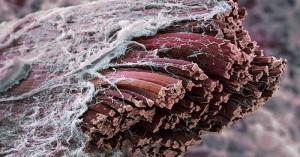Treating the person not the symptom is the basis of what it feels like to work with the myofascial system. The fascia system is a web of tissue that covers the whole body that has microtubules that allows for fluidity. It does not show up on x-rays, myelograms, MRI’s , CAT scans, electromagnets, and its not commonly shown in anatomy books, nor studied effectively in medical science.
The Science.
In 2018 the development of a laser system that could finally see fascia and the vibration, light and energy that flows within it. The scientific world finally got its measurable proof of the implications of  fascia within the body, as most medicine for centuries have studies the human body with the deceased, not the living with a working cellular system. The fascia tissue is being studied closely for how it relates to the communication of the human body at a cellular level. In short, how important is fascia to our memory, cognitive behavior, our pain? If you’re interested in reading further information, Discover Magazine published an article called “Down the Rabbit Hole”, and Youtube has a video called ” What’s all the Fuzz” to help you understand a little bit more about fascia system.
fascia within the body, as most medicine for centuries have studies the human body with the deceased, not the living with a working cellular system. The fascia tissue is being studied closely for how it relates to the communication of the human body at a cellular level. In short, how important is fascia to our memory, cognitive behavior, our pain? If you’re interested in reading further information, Discover Magazine published an article called “Down the Rabbit Hole”, and Youtube has a video called ” What’s all the Fuzz” to help you understand a little bit more about fascia system.
Myofascial Release Therapy.
It is important to know that this is not something new or a “new organ” of the body. It has always been in the human body. How does this translate into patient therapist treatment? Listening to the patient, listening to their pain, addressing the symptom but searching for the cause.
Working with Myofascial Release allows the therapist to stop for a moment and really listen to their clients and what their body is trying to communicate. It is a slower treatment with the therapist using specific holding techniques over the skin sometimes up to 5 minutes. There are a variety of courses that the therapist may use and they therefore hold the tissues in a variety of ways, however the goal is to “enhance flow of liquid light through a fascial web.” Myofascial Release is used to help treat the pain and range of motion, but most importantly to help eliminate holding patterns at a cellular cognitive level. When you are working with our cognition and memory to help the patient with their physical pain, you begin to treat the patient and not just the symptom.
Please contact the clinic at (905) 945-4481 if you have anymore questions or to book an appointment to try it out.
